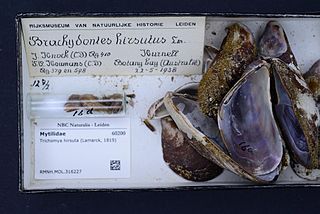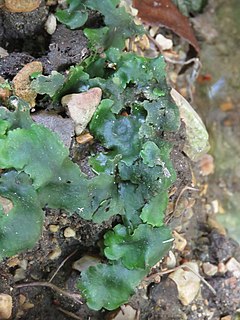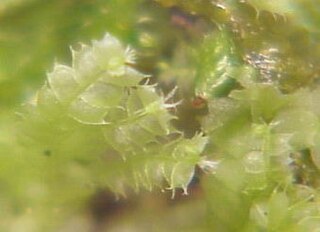
Pollution is the introduction of contaminants into the natural environment that cause adverse change. Pollution can take the form of any substance or energy. Pollutants, the components of pollution, can be either foreign substances/energies or naturally occurring contaminants. Although environmental pollution can be caused by natural events, the word pollution generally implies that the contaminants have an anthropogenic source – that is, a source created by human activities. Pollution is often classed as point source or nonpoint source pollution. In 2015, pollution killed 9 million people worldwide.

Water pollution is the contamination of water bodies, usually as a result of human activities, so that it negatively affects its uses. Water bodies include lakes, rivers, oceans, aquifers, reservoirs and groundwater. Water pollution results when contaminants are introduced into these water bodies. Water pollution can be attributed to one of four sources: sewage discharges, industrial activities, agricultural activities, and urban runoff including stormwater. It can be grouped into surface water pollution or groundwater pollution. For example, releasing inadequately treated wastewater into natural waters can lead to degradation of these aquatic ecosystems. Water pollution can also lead to water-borne diseases for people using polluted water for drinking, bathing, washing or irrigation. Water pollution reduces the ability of the body of water to provide the ecosystem services that it would otherwise provide.

Soil contamination, soil pollution, or land pollution as a part of land degradation is caused by the presence of xenobiotic (human-made) chemicals or other alteration in the natural soil environment. It is typically caused by industrial activity, agricultural chemicals or improper disposal of waste. The most common chemicals involved are petroleum hydrocarbons, polynuclear aromatic hydrocarbons, solvents, pesticides, lead, and other heavy metals. Contamination is correlated with the degree of industrialization and intensity of chemical substance. The concern over soil contamination stems primarily from health risks, from direct contact with the contaminated soil, vapour from the contaminants, or from secondary contamination of water supplies within and underlying the soil. Mapping of contaminated soil sites and the resulting cleanups are time-consuming and expensive tasks, and require expertise in geology, hydrology, chemistry, computer modeling, and GIS in Environmental Contamination, as well as an appreciation of the history of industrial chemistry.

The pinworm, also known as threadworm or seatworm, is a parasitic worm. It is a nematode (roundworm) and a common intestinal parasite or helminth, especially in humans. The medical condition associated with pinworm infestation is known as pinworm infection (enterobiasis) or less precisely as oxyuriasis in reference to the family Oxyuridae.

Urban runoff is surface runoff of rainwater, landscape irrigation, and car washing created by urbanization. Impervious surfaces are constructed during land development. During rain, storms and other precipitation events, these surfaces, along with rooftops, carry polluted stormwater to storm drains, instead of allowing the water to percolate through soil. This causes lowering of the water table and flooding since the amount of water that remains on the surface is greater. Most municipal storm sewer systems discharge stormwater, untreated, to streams, rivers and bays. This excess water can also make its way into people's properties through basement backups and seepage through building wall and floors.

Marchantia polymorpha is a species of large thalloid liverwort in the class Marchantiopsida. M. polymorpha is highly variable in appearance and contains several subspecies. This species is dioicous, having separate male and female plants. M. polymorpha has a wide distribution and is found worldwide. Common names include common liverwort or umbrella liverwort.

Environmental effects of mining can occur at local, regional, and global scales through direct and indirect mining practices. The effects can result in erosion, sinkholes, loss of biodiversity, or the contamination of soil, groundwater, and surface water by the chemicals emitted from mining processes. These processes also affect the atmosphere from the emissions of carbon which have an effect on the quality of human health and biodiversity. Some mining methods may have such significant environmental and public health effects that mining companies in some countries are required to follow strict environmental and rehabilitation codes to ensure that the mined area returns to its original state.

Vermiculation is a surface pattern of dense but irregular lines, so called from the Latin vermiculus meaning "little worm" because the shapes resemble worms, worm-casts, or worm tracks in mud or wet sand. The word may be used in a number of contexts for patterns that have little in common. The adjective vermiculated is more often used than the noun.

Trichomya is a monotypic genus of marine bivalve molluscs in the family Mytilidae, the mussels. The only species is Trichomya hirsuta which is endemic to southern and eastern Australia. Its common names include the hairy mussel, the greenling and the kelp greenling.
Riccia crassifrons is a species of liverwort belonging to the family Ricciaceae.
Fissidens elegans is a species of moss belonging to the family Fissidentaceae.
Fissidens serratus is a species of moss belonging to the family Fissidentaceae.

Monoclea gottschei is a species of liverwort belonging to the family Monocleaceae.
Rhodobryum huillense is a species of moss belonging to the family Bryaceae.

Lophocolea bidentata is a species of liverwort belonging to the family Lophocoleaceae.
Noteroclada confluens is a species of liverwort belonging to the family Noterocladaceae.
Plagiochila laetevirens is a species of liverwort belonging to the family Plagiochilaceae. It is common as an epiphyte in the dryland forests of Guyana.
Clasmatocolea is a genus of liverworts belonging to the family Lophocoleaceae.
Symphyogyna brongniartii is a species of liverwort belonging to the family Pallaviciniaceae.
Symphyogyna brasiliensis is a species of liverwort belonging to the family Pallaviciniaceae.











